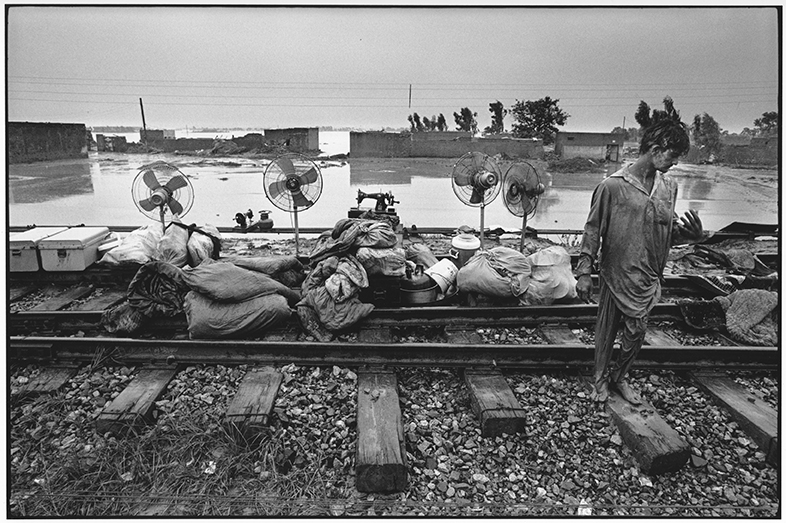Rune Eraker
The Blind Eye

© Rune Eraker, Honduras, 2009
Inocente Gomez, a farmer in Jesus de Otoro, despairs over a harvest that once again looks as though it will fail.
"Before, we could tell you the exact days when the rain would come," he says. "In the past 5-6 years, it hasn't been possible to predict when the rains will come.
Changes in the rain patterns have time and again resulted in the maize failing to mature for harvest."
What does the impact of climate change look like? Who feels the results of our exploitation of the planet we all live on? The exhibition The Blind Eye is shown in conjunction with Edward Burtynsky’s exhibition Man and Earth. Light and Shoadows, also photographing the human traces on earth. Whereas Burtynsky gives the overview, Eraker gets close to the humans.
Eraker claims it's difficult for most of us to relate to climate changes that will happen hundred years ahead of time. Instead, we have to concentrate on our time, in order to relate. As climate is abstract in many ways, he finds it right to show individual stories and thereby show the impact of the climate changes for the ones living in vulnerable areas.
The exhibition is accompanied by the photo book Det blinde øye/A blind eye, which is available in a Norwegian-English version. From the back cover blurb:
"At a time when the most serious challenge facing us is climate, Norway's focus is on oil, government budgets, evaluations and getting more for every NOK spent. It is on housing prices that must not drop. Newspapers that must sell. Politicians who are continuously measured by polls and popularity. And they must be re-elected. In four years. The cycle is four years. This exhibition; this book, is about that. About the hundred-year perspective we have lost and about those who are the first to pay the price. The price for the cycle being so short at the moment that it no longer takes upcoming generations into account. It does not even take account of those who are living now.”
Det blinde øye ble vist på Oslo Rådhusgalleri i 2013, Bymuseet i Bergen og Tromsø Kunstforening i 2014. Selv om utstillingen er fem år gammel, og enkelte av bildene flere år eldre, er den (dessverre) mer aktuell enn noen gang.
Rune Eraker (b.1961) has for more than 25 years worked as an independent documentary photographer. He has had a number of solo-exhibitions in museums (such as Stenersenmuseet 2001, Trondheim Museum of Fine Art 2006 and The Nobel Peace Center 2009, and has published widely in magazines and newspapers, both in Norway and internationally. He has also published a number of photo-books (such as “Øyeblikk av Lys” Aschehoug 2001, “The Smell of Longing” Wigestrand, 2005, and “The Dream of Europe” Forlaget Press, 2009). Currently he is heading the editorial team of Norwegian Journal of Photography, and he is one of four curators at European Photo Exhibition Award (EPEA). In 2014 The Museum of Contemporary Art in Krakow (MOCAK) exhibited Erakers solo-exhibition “Uprooted”.











